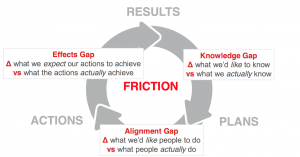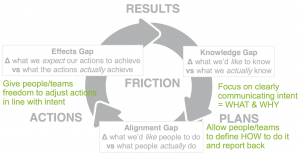Does the “perfect strategy” exist?
In the work we do, we see lots of time and effort put into creating strategies. Sometimes it can look like the quest to create a perfect strategy is more important than its delivery. Endless research, reporting back, refining, realigning, re-researching, testing, re-refining … the story goes on.
Here we want to discuss “The Myth of the Perfect Strategy” and ask you to think about some of the potential traps you may be falling into when trying to create one.
Battleplan
We are told that “no battleplan survives initial contact with the enemy” but why is that? In his excellent book, “The Art of Action”, Stephen Bungay looks at the lessons we can learn from military campaigns of the past in understanding the challenges many business leaders face when trying to create and enact strategies in today’s complex world.
In his book, Bungay identifies three “gaps” that cause “friction” and prevent our strategies from having the desired effect. The typical response to encountering these gaps is more command and control which makes the situation worse. Nevertheless, more command and control leads to delays, less innovation and less motivation… dangerous side effects in today’s ruthless world. The three gaps are shown in the diagram below (originally created by Erik Schon):
The Knowledge Gap
This is the gap between what we would like to know and what we actually know when it comes to what we are trying to achieve and how we plan to achieve it. Our typical reaction to trying to fill the knowledge gap is to search for more information in order to find the definitive answer to our problem. However, in today’s complex world of interrelationships, in all but the simplest of problems, one right answer rarely exists. Therefore the quest for the perfect data or solution is impossible.
The Alignment Gap
This is the gap between what we want people to do and what they actually do. Our typical reaction to trying to fill the alignment gap is to provide more detailed instructions. However, as Bungay states “we confuse clarity with detail”. Often, people aren’t doing what we want them to to be difficult or obstructive… they are doing it because they don’t understand our intent or because our plans don’t make sense in the light of what they know to be reality.
The Effects Gap
This is the gap between what we expect our plans to achieve and what they actually achieve. Our typical reaction to the effects gap is to impose tighter controls. By confusing outcomes with metrics, we try to measure more and more and lose sight of what our ultimate goals are. The UK government’s agenda in the National Health Service and education system often seems to be driven more and more by measurements than focusing on effective outcomes.
A more enlightened approach?
As the diagram below shows, maybe we can change the way we set direction and close some of these gaps:
Closing the Knowledge Gap
Focus more on clearly communicating intent and clarifying what we want to achieve and why rather than how we want to achieve it. By doing so we unlock the tacit knowledge of those who deliver our products and services to do what’s right to deliver our aim rather than follow our plans.
Closing the Alignment Gap
Once we have explained what we are trying to achieve and why, those who will implement the strategy should define the tasks implied, explain to us what they are going to do as a result then check back with us. This communication loop is critical to ensuring our teams know what the goal is and that we feel confident in their plans to deliver them (and can help refine it if it becomes clear they have misunderstood our intent).
Closing the Effects Gap
Giving our people the freedom to operate within specified boundaries (values, behaviours, codes of conduct etc.) and to deliver our agreed intent is more effective than trying to impose more and more control. Obviously, everyone must have the skills and resources to do what is needed and the space to take independent decisions and actions when the unexpected occurs, as it will.
Conclusion
In a world where our operating environment changes on a daily basis, perhaps it is now time to relinquish the myth of perfect strategy. Accepting that our aim should be to try to clarify and direct a common understanding of intent rather than to create the perfect plan has to be a better way to define our role as leaders. If we want faster decision-making, more innovation and greater motivation, we have to be prepared to try.
If you are looking for a simple way to introduce and reflect on these concepts in your team, you may want to buy and share a copy of The Bee Book. This simple fable written by our own Craig Smith and Paul Rigby illustrates the pitfalls of trying to create the perfect strategy in a rapidly changing world. It also looks at what happens when people (or bees) close the gaps we have discussed in this article by leading in a different way.








